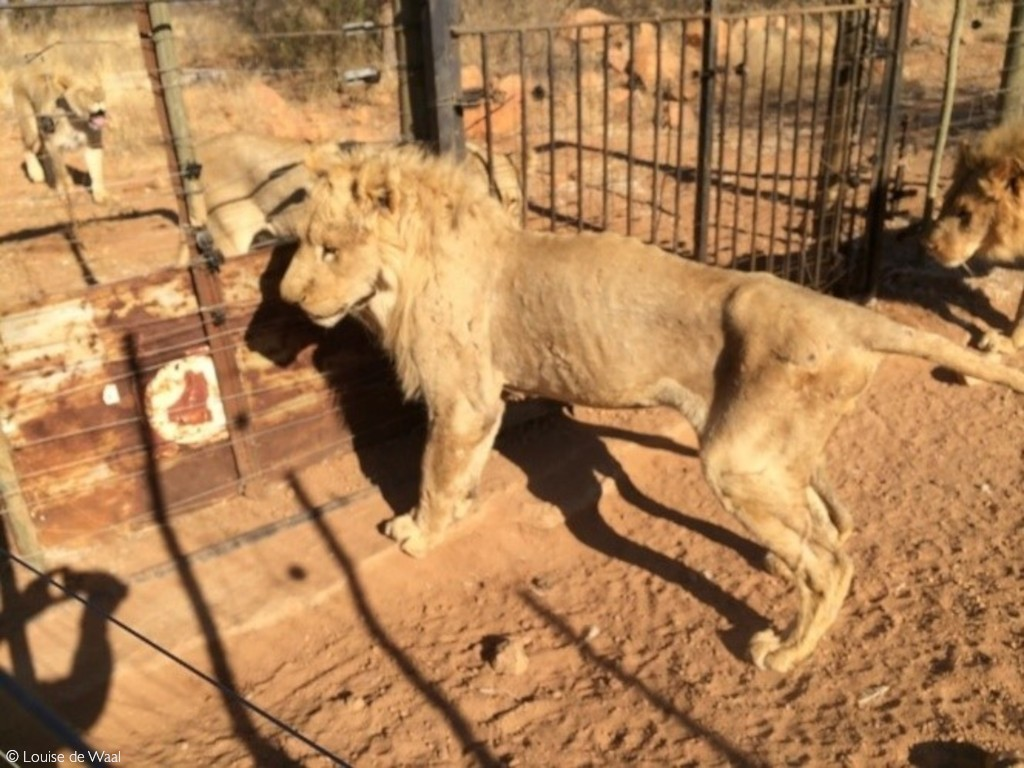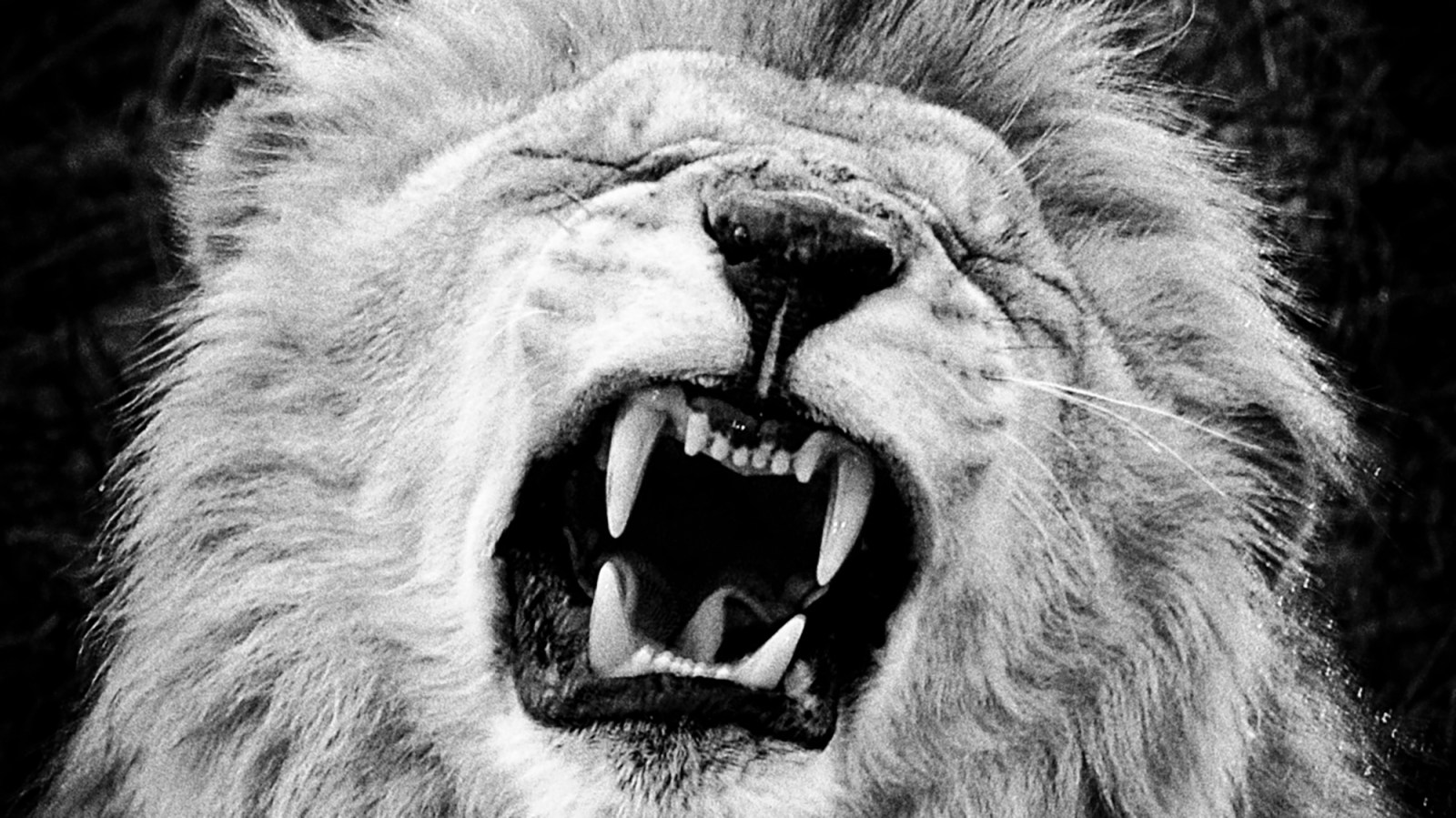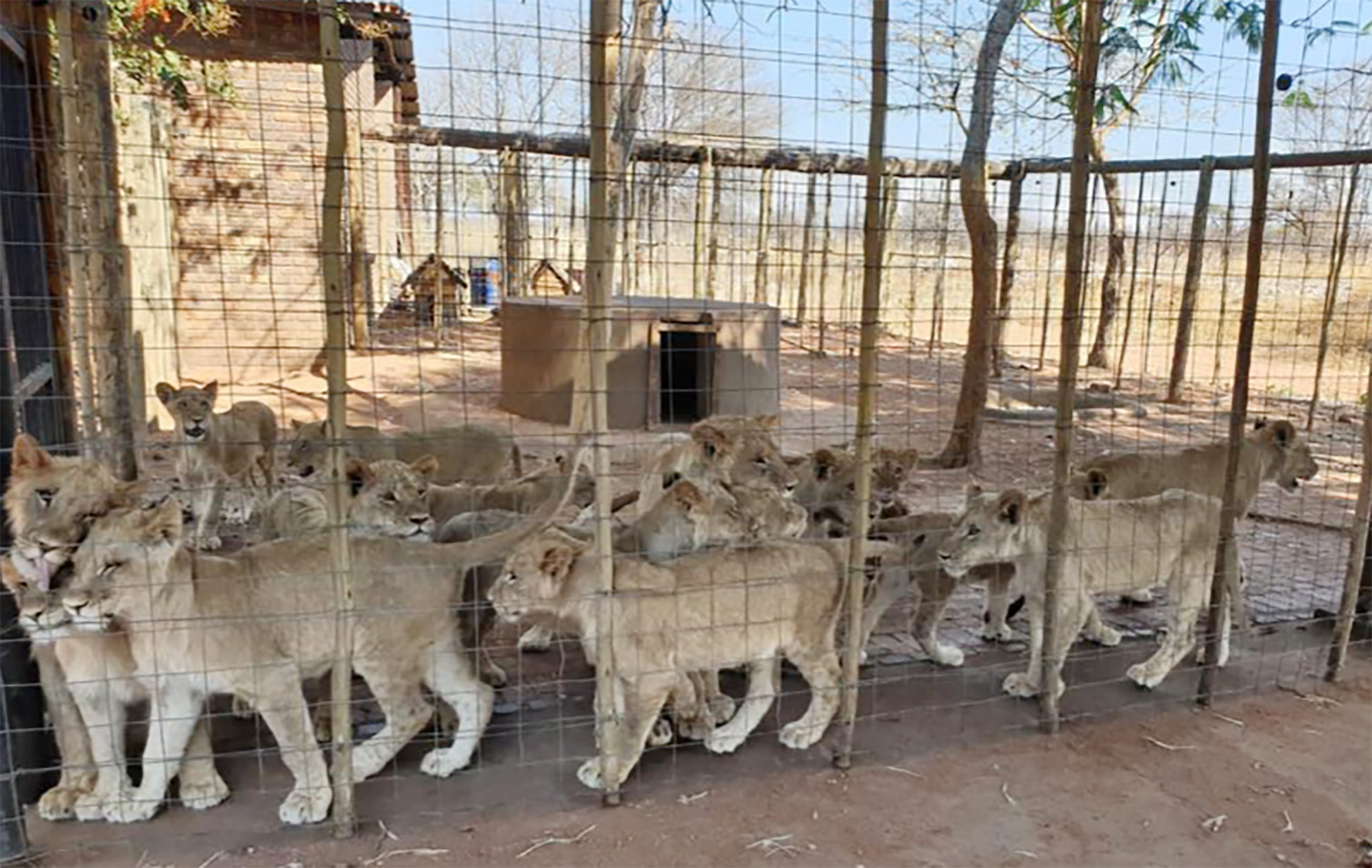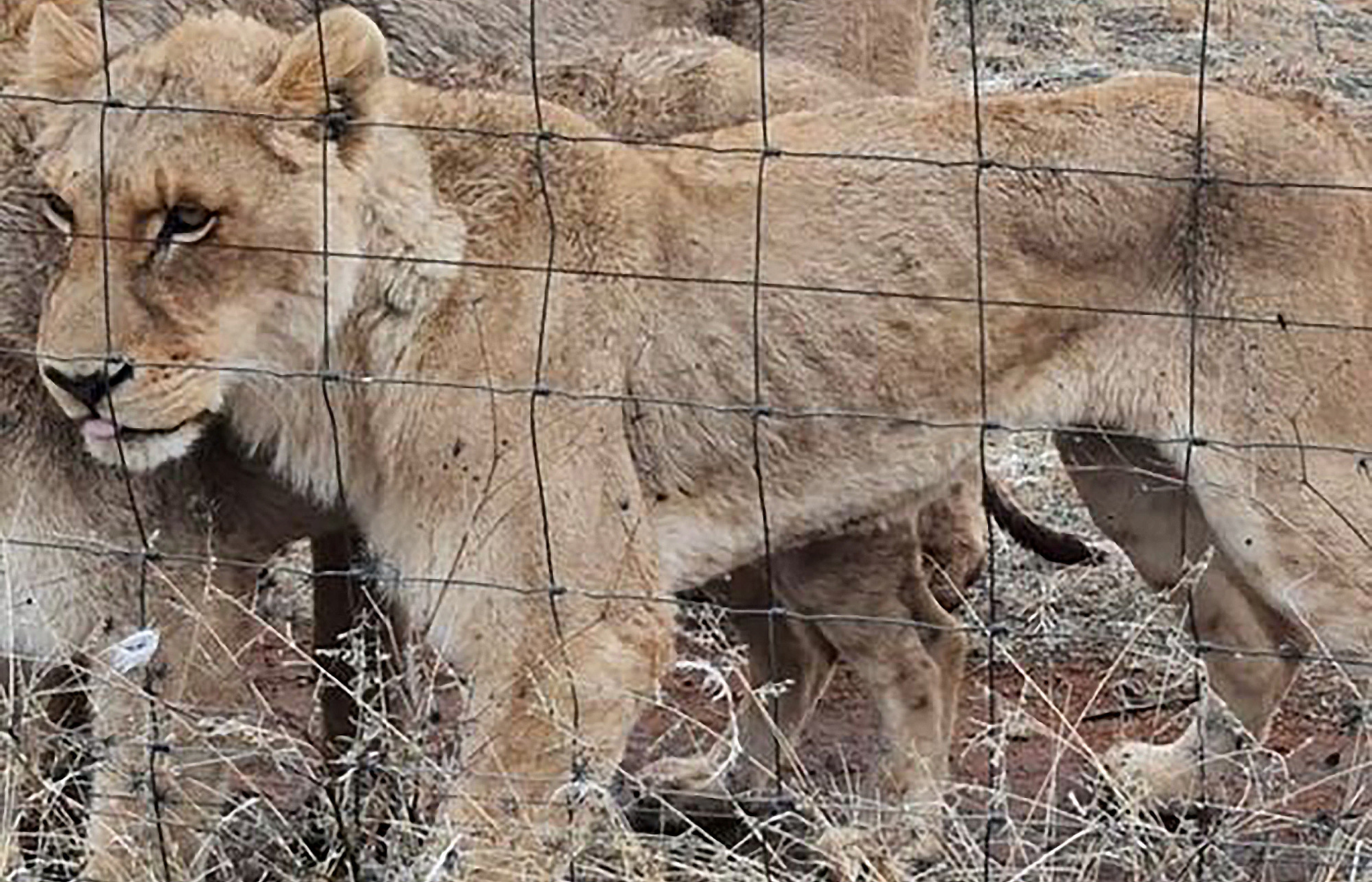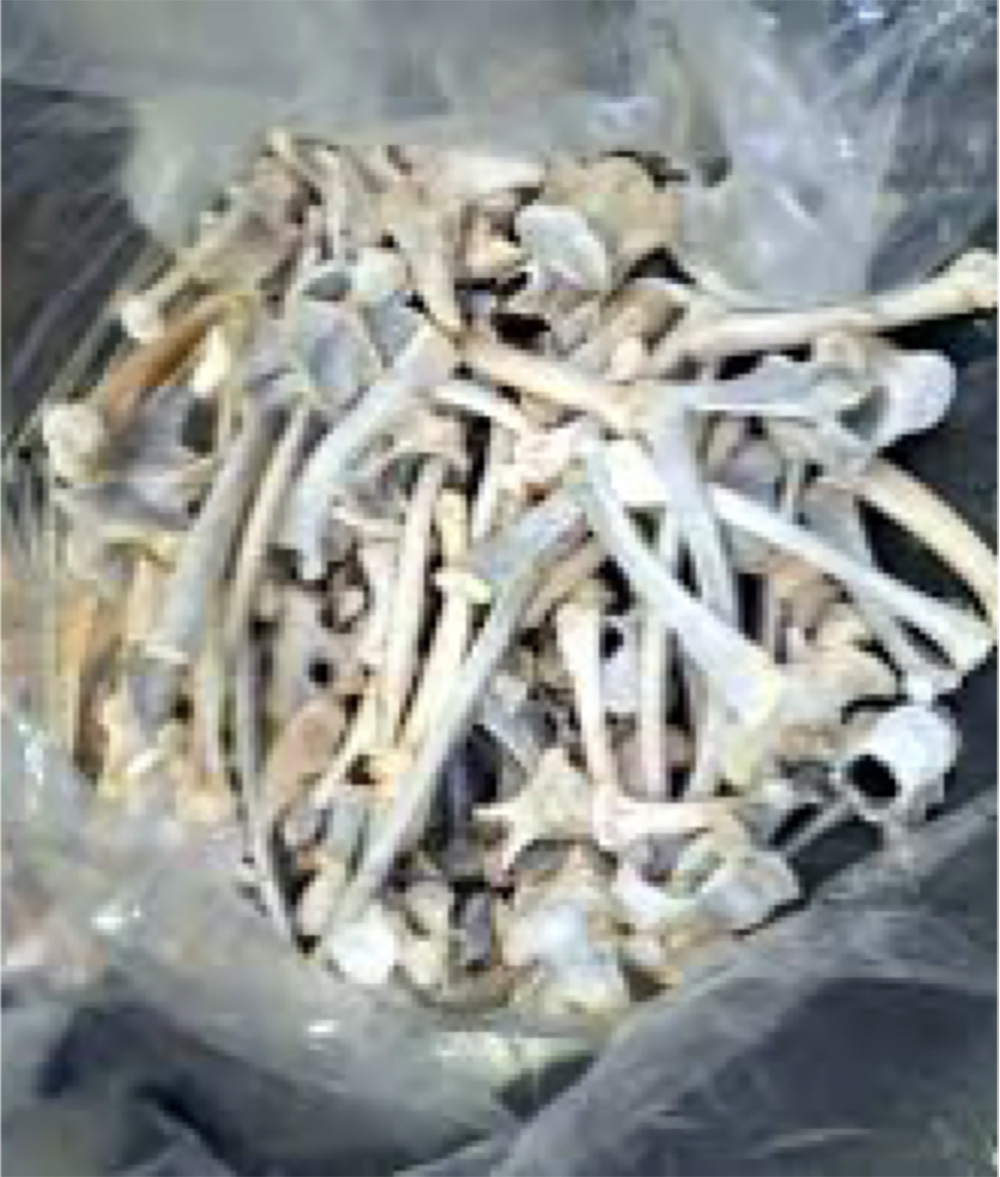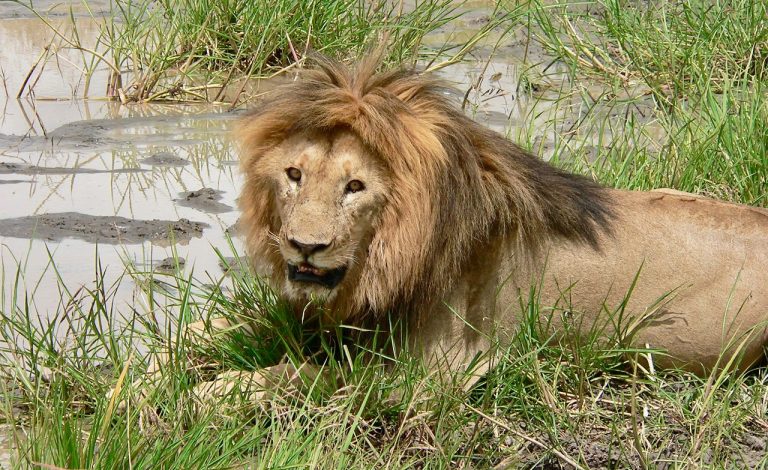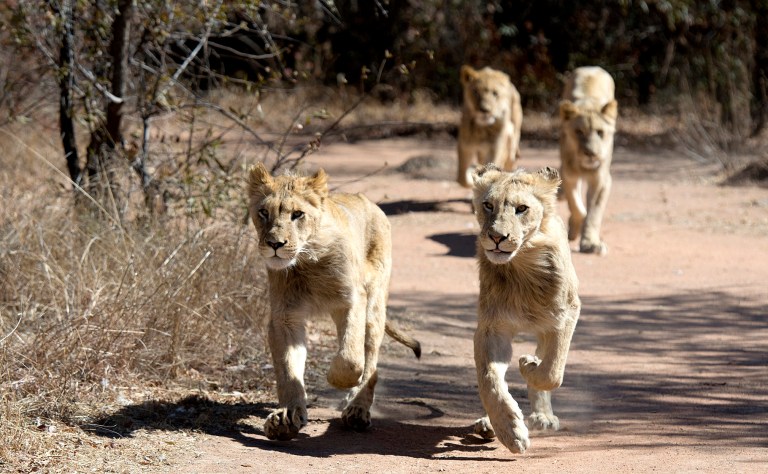Era of captive lion industry in South Africa may be over – what does this mean for the lion bone trade?
By Global Initiative Against Transnational Organized Crime• 11 July 2021
 Lion bones are cleaned at a processing facility in South Africa. (Photo: Courtesy of Julian Rademeyer)
The South African government has announced a landmark decision to end the country’s controversial captive lion industry which includes canned hunting, petting zoos and the commercial trade in lion bones. Whether the legal bone trade has stimulated poaching and laundering are fiercely debated questions among lion conservation experts. So too is whether ending the captive lion industry will put wild lion populations at greater risk of poaching, given that international demand for lion bone will persist.
Lion bones are cleaned at a processing facility in South Africa. (Photo: Courtesy of Julian Rademeyer)
The South African government has announced a landmark decision to end the country’s controversial captive lion industry which includes canned hunting, petting zoos and the commercial trade in lion bones. Whether the legal bone trade has stimulated poaching and laundering are fiercely debated questions among lion conservation experts. So too is whether ending the captive lion industry will put wild lion populations at greater risk of poaching, given that international demand for lion bone will persist.
The South African government made a landmark decision in May 2021 to end the country’s controversial captive lion industry. One reason given by Barbara Creecy, the environment minister, for shutting down the captive industry was “the risk that trade in lion parts poses to stimulating poaching and illegal trade”, while the official government report highlighted the risk of the “laundering of poached parts” into the legal market. The decision was also shaped by the accusations of severe neglect levelled by conservationists and animal welfare groups for years against the captive industry. The government’s assessment also found that the negative associations of captive lions were damaging to South African ecotourism.
Yet whether the legal bone trade has stimulated lion poaching, and whether bones from poached wild lions really have been “laundered”, are fiercely debated issues. So too is the question of whether ending the captive lion industry will put wild lion populations at greater risk of poaching, as international demand for lion bone will likely continue.
The rise and fall of the lion bone industry

There are estimated to be as many as 12,000 lions in captive facilities in South Africa. These lions are used for hunting, lion interactions and petting, as well as for commercial trade in lion parts, principally bones. Since the first permit to export lion skeletons from South Africa under CITES (the Convention on International Trade in Endangered Species of Wild Fauna and Flora) was issued in 2008, an industry has emerged in which intermediary lion bone traders buy skeletons from various breeding and hunting facilities and sell them to buyers in East and Southeast Asia, where they are sold as an alternative to (or marketed as) tiger bones for use in traditional medicine. An estimated 98% of lion bone exports from South Africa between 2008 and 2015 were to Laos and Vietnam – countries deeply implicated in the illegal wildlife trafficking of species such as rhino. There is also local demand in South Africa for lion parts that are used in traditional African medicine.
The May 2021 decision acts on the recommendation of the High-Level Panel of experts on wildlife conservation. Most of the panel recommended an immediate halt to captive lion breeding, use of captive lions in tourism and the trade in derivatives such as bones, arguing that the industry causes more economic damage than benefit.
Yet the panel could not reach a unanimous position. Two minority positions were also published, which did not recognise that laundering of poached parts is a major risk to wild populations, and recommended different ways of monitoring and regulating the captive industry and bone exports.
 A pair of lion skulls stripped of flesh and cleaned, ready for export. (Photo: Courtesy of Julian Rademeyer)
Have wild lion bones been ‘laundered’ through the South African market?
A pair of lion skulls stripped of flesh and cleaned, ready for export. (Photo: Courtesy of Julian Rademeyer)
Have wild lion bones been ‘laundered’ through the South African market?
Some interest groups have voiced suspicions that the South African market provides a cover for laundered bones. Stephen Palos, chief executive of the Confederation of Hunting Associations of South Africa (CHASA), said that he has little doubt that laundering of bones has taken place, though this is more likely to be through volumes of captive-bred bones being understated in export shipments than poached lion bones being deliberately included.
But in the view of many conservation scientists and researchers, these suspicions are not backed up by evidence. “I will state quite emphatically that both the risk of and evidence for ‘laundering’ of lion body parts through South African legal channels since [a quota was imposed by a CITES ruling in 2016] is negligible to almost nonexistent,” said Michael ’t Sas-Rolfes, an economist who studies legal and illegal wildlife markets and sat on the High-Level Panel.
The legal channel for exporting lion bones via CITES from South Africa included several monitoring checks, including DNA testing of lion bones and measuring of skeleton weights, to ensure that the correct individual skeletons were included in export shipments. A 2021 study reviewing the compliance of CITES lion bone exports with these monitoring systems found that there were few instances of suspected criminal activity. In the view of Michael ’t Sas-Rolfes, the review showed that the system was rigorous enough that “there really wasn’t much scope for using that system for any significant scale of illegal trade of wild-harvested lions or other big-cat products”.

Other laboratory-based techniques such as mass spectrometry can be used to differentiate between wild and captive-bred lion bones, and could provide the key to finding out whether laundering has taken place. Yet according to David Newton, southern Africa director of the wildlife trade monitoring group TRAFFIC, these techniques remain in early stages of development and have not been widely used in lion bone exports. Now that legal exports are to end, in his view, it might never be known whether laundering really was widespread or not.
Some experts also question whether laundering would make sense from an economic perspective. The quota, imposed from 2017, was substantially lower than the number of skeletons that would be available from the captive lion industry. Laundering poached bones from wild lions would therefore involve additional cost and risk. “One has to look at the motivation for that. Why would you launder wild bones as captive-bred bones, when lions from captive populations are so easy to access and captive bones are just perfectly acceptable for the end destination?” said Newton.
However, some conservationists report that a parallel, illegal trade has emerged, which may circumvent the CITES monitoring system. According to Kerri Rademeyer, CEO of the Zambian non-profit organization Wildlife Crime Prevention, this parallel trade takes place in multiple forms including “lion cake” – a preparation of boiled down and compressed lion bone for medicinal use, which could be more difficult to track than the bones themselves.
 A captive lion paces its enclosure in a breeding facility in South Africa. (Photo: Courtesy of Julian Rademeyer)
Recent trends in lion poaching: Is there a link to the bone trade?
A captive lion paces its enclosure in a breeding facility in South Africa. (Photo: Courtesy of Julian Rademeyer)
Recent trends in lion poaching: Is there a link to the bone trade?
Some conservationists believe that the legal trade in lion parts is stimulating international demand and leading to an increase in lion poaching, particularly in countries bordering South Africa. A key piece of evidence in this debate is a 2019 study of lion killings in Limpopo National Park, Mozambique, which neighbours South Africa’s Kruger National Park. The study found that the targeted poaching of lions for body parts accounted for 61% of lion mortalities between 2011 and 2018.
“It looked like it was coinciding with South Africa’s legal export of body parts, because of its geographic nature and the fact that it was right next door to South Africa,” said Kristoffer Everatt, project manager for the Lion Program at Panthera, the global wild cat conservation organisation, and an author of the study. According to Everatt, perceptions shifted in the Limpopo area around 2013-2014, from lion bones being a comparatively “worthless” commodity, to parts such as bones, teeth and claws suddenly being perceived as high value.
Further analysis by Panthera has compared rates of poaching in Limpopo to the number of lion export permits issued per year in South Africa. “The patterns there were just so similar. I have to believe there’s a link,” said Paul Funston, Lion Program Senior Director at Panthera, though acknowledging that it is difficult to prove this link statistically.
Reports of lion poaching for parts, and seizures of parts such as bones, teeth and claws, have been on the rise in some parts of southern Africa. According to Carlos Lopes Pereira, head of Law Enforcement and Anti-poaching at Mozambique’s National Administration of Conservation Areas, illegal demand for lion parts has risen in areas across Mozambique.
Yet the data suggesting that there is a trend towards poaching for body parts – of any type – is by no means uniform. “Colleagues and I used long-term mortality data from around Ruaha in Tanzania, and Hwange in Zimbabwe, and thankfully found no evidence indicating a trend towards the killing of lions for commercial body parts,” said Amy Dickman, director of the Ruaha Carnivore Project. However, she adds, trends in different lion ranges may be very different. Others working and researching in Tanzania also argued that there was, as yet, no evidence there to suggest a trend towards poaching for body parts for international trade.
Others disagree that an increase in poaching can be linked to the South African legal trade in lion parts. Lopes Pereira, for example, argued that the increase in poaching for parts in Mozambique only began several years after the trade became established in South Africa, making it hard to establish a direct connection with the legal trade. Instead, parts from poached and poisoned lions from Mozambique are largely sold on to Asian traffickers or smuggled to neighbouring countries including Zimbabwe, Zambia and Malawi before being shipped to Asian destination markets.
“I personally disagree with the narrative … that the poaching in Limpopo National Park is or was driven to any significant degree by the demand for lion bones and especially that South Africa’s legal trade somehow had a causal role to play here,” said ’t Sas-Rolfes. In his view, poaching in this particular area was driven by a number of factors, such as protest-related killings of lions by communities as a backlash to the militarised approach to conservation taken in Limpopo National Park, and the presence in the area of wildlife trafficking networks that had previously dealt in rhino horn who could also have begun trafficking in other wildlife such as pangolin and lion body parts.

“It is interesting to note that around the same time that lion poaching picked up [in Limpopo National Park] there was a surge in illegal trade in jaguar fangs in Latin America … and this also coincided with the move of Asian wildlife jewellery and trinket trade from physical markets to online platforms, giving those markets for items such as big-cat tooth and claw products wider reach,” he said.
Funston, however, sees demand for claws and teeth for “trinkets” as part of the same picture. “People have so habitually referred to the trade out of South Africa as lion bone trade, I think they forget and ignore the very significant number of teeth and claws that are going out as well,” he said. “[These are] stimulating a market, perhaps a different market than the market that bones would be used for, but nevertheless a market. [It] would seem to be lucrative enough that illegal hunters around the sub-region have started killing lions and removing faces, teeth and claws et cetera, from the carcasses that they hunt.”
Everatt also acknowledged that other factors could be at play in Limpopo, including the presence of established rhino trafficking networks, meaning that there was already an established culture of poaching and poaching-related corruption in the region. “The same individuals that were poaching elephant and rhino are now also poaching lion, and often on the same trips … because they could make a trip to Kruger and on the way, they would snare something, lay some poison, go hunting for elephant and rhino and then on their way home, they would pick up some lion body parts,” he said. Lopes Pereira also agreed that there is a convergence of networks dealing in wildlife that is in demand in Asia, and that rhino horn, ivory, pangolin and leopard skin and claws have all been seized alongside lion products.
Not only is interpreting the data on lion poaching a challenge, it is also a challenge to collect this data in the first place. “One of the complexities here is that killing of lions (and other wildlife) often involves mixed motivations – so a lion might be killed because of conflict or cultural prestige, but then body parts also used for local or international trade,” explains Dickman.
Another issue is identifying when lions have been killed. “If poachers are actually going to process a carcass, to the point where it’s got [only] bones left, law enforcement et cetera aren’t going to find the carcass in the wild,” says Funston. This makes it difficult to assess the number of lions being killed for parts, beyond the few instances where poachers have been arrested in possession of bones. This in turn makes defining poaching – and therefore measuring whether it is on the rise – more complicated than people usually imagine.
 A Thai man working with Chumlong Lemthongthai – a known wildlife trafficker – poses with a set of lion bones prepared for export in 2010. (Photo: Courtesy of Julian Rademeyer)
The future of lion poaching and illegal trade
A Thai man working with Chumlong Lemthongthai – a known wildlife trafficker – poses with a set of lion bones prepared for export in 2010. (Photo: Courtesy of Julian Rademeyer)
The future of lion poaching and illegal trade
Many experts thought it possible that shutting down the captive lion industry could lead to increased poaching of wild lions in future. “I am very worried about the potential unintended consequences of this decision,” said Dickman. “This ruling would permanently shut off the only legal supply of lion bone, and yet we know the demand is still there, and may be rising. That leads to the obvious risk that demand will increasingly be met through illegal and unregulated killing of wild lions, which could pose a major threat for those populations.”
However, some viewed the potential benefits as outweighing the risks. “The current trajectory proves that practices within the captive lion industry are irresponsible, inhumane and unsustainable. The industry in itself is a risk to wild lion population conservation and broader biodiversity conservation efforts,” said Pricilla Stiglingh, of the South African NSPCA. “In mitigating risks [to wild lions], one cannot allow the practices of one industry to be detrimental to the larger biodiversity and ecotourism sector of South Africa. This needs to be looked at in a holistic manner by including all the threats wild lions face including use of bones and body parts, indiscriminate killing and human wildlife conflict and habitat loss. The solution is for all stakeholders, communities and government to commit to the overall conservation of wild lions by increasing suitable habitat and thriving wild lion populations, instead of defending a commercialised captive lion industry.”
“Yes, we might expect increased rates of poaching,” said Funston. “[But] to suggest in any way that we should perpetuate an industry because we’re scared of the knock-on consequences of taking action, that’s just weak in my view.”
Some also argued that the legal trade has already driven a demand for illegal supplies of lion bones and derivatives, and that the industry should be ended. “The whole lion bone trade may never have become a legitimate trade until South Africa made it one,” said Rademeyer. Others disagreed, arguing that since international demand is already a reality, a more practical approach going forward would be an adaptive management approach, involving phasing out captive lions but making use of existing stockpiles of products such as bone and, if necessary, phasing in other sources such as wild-managed lions.
Some facilities and traders currently exporting lion bone legally may turn to alternative, more clandestine ways of exporting bones from captive lions. “In terms of the illegal side, that is pretty much a no-brainer how things are going to play out in future,” says one lion bone trader. “The government made their own bed so they have to lie in it.” Palos, of CHASA, agreed, saying there is little doubt that some lion bone traders will be approached by individuals looking for illegal exports of bone.
A 2019 study surveying lion breeding facilities found that 52% of respondents indicated they would adapt by seeking “alternative markets” for lion bones if the export was legally restricted. “We left it up to the respondents to interpret what ‘alternative markets’ meant – and I’m not certain that they all interpreted this to mean illegal [exports of bones],” said Vivienne Williams, a leading expert on the lion bone trade.
In Funston’s view, the business links and networks formed in the legal lion trade could form the basis of illegal trafficking networks in future. This would be similar to the situation whereby, for many years, it was legal to hunt white rhino horn in South Africa. Asian rhino traders commissioned hunts to export horns legally, and during that time created vast networks of contacts that then transitioned into illegal rhino horn trafficking once rhino horn exports were banned. “I’m absolutely convinced that in the lion game, that the farms [and] traders that are now involved are very familiar with each other. They’re very used to and comfortable with trading [lion] products legally. If a country bans it … it’s very likely that the same people will just continue and utilise those networks,” he said.
Known wildlife traffickers have also been historically involved in the lion bone trade. One major early buyer, for example, was Vixay Keosavang, who headed one of the world’s largest wildlife trafficking syndicates that transported wildlife products such as rhino horn and ivory to Asia. However, according to Williams, as the industry grew over time and more people entered the lion bone trade, fewer breeders and traders had direct connections to these known wildlife traffickers.
To be implemented, the recommendations of the High-Level Panel still need to be brought into legislation, which can be a time-consuming process. Any future legislation is also expected to be challenged in the courts and fought out between those with commercial interests in the lion industry and animal rights groups.
The different views among conservation experts on the decision to end the industry, and the impact this could have on illegal trade in lion parts, demonstrate how complex this policy question is, as it must balance the sometimes-conflicting interests of countering criminal activity, conservation, animal rights and the private sector. While the South African government may be striving to create evidence-based policy, much of the evidence on lion bone trade still appears very much up for debate. DM
This article appears in the Global Initiative against Transnational Organized Crime’s monthly East and Southern Africa Risk Bulletin. The Global Initiative is a network of more than 500 experts on organised crime drawn from law enforcement, academia, conservation, technology, media, the private sector and development agencies. It publishes research and analysis on emerging criminal threats and works to develop innovative strategies to counter organised crime globally. To receive monthly Risk Bulletin updates, please sign up here.

